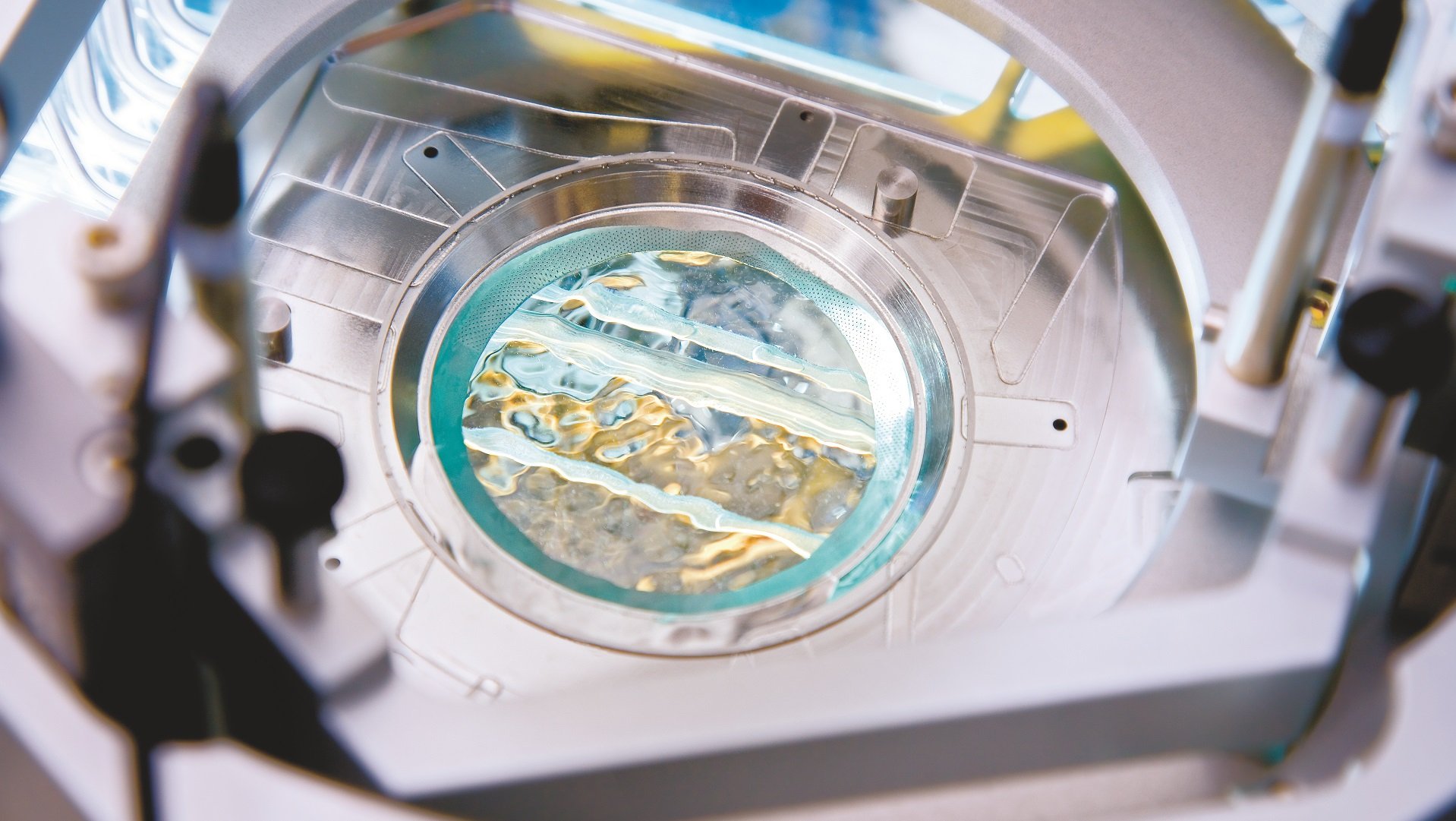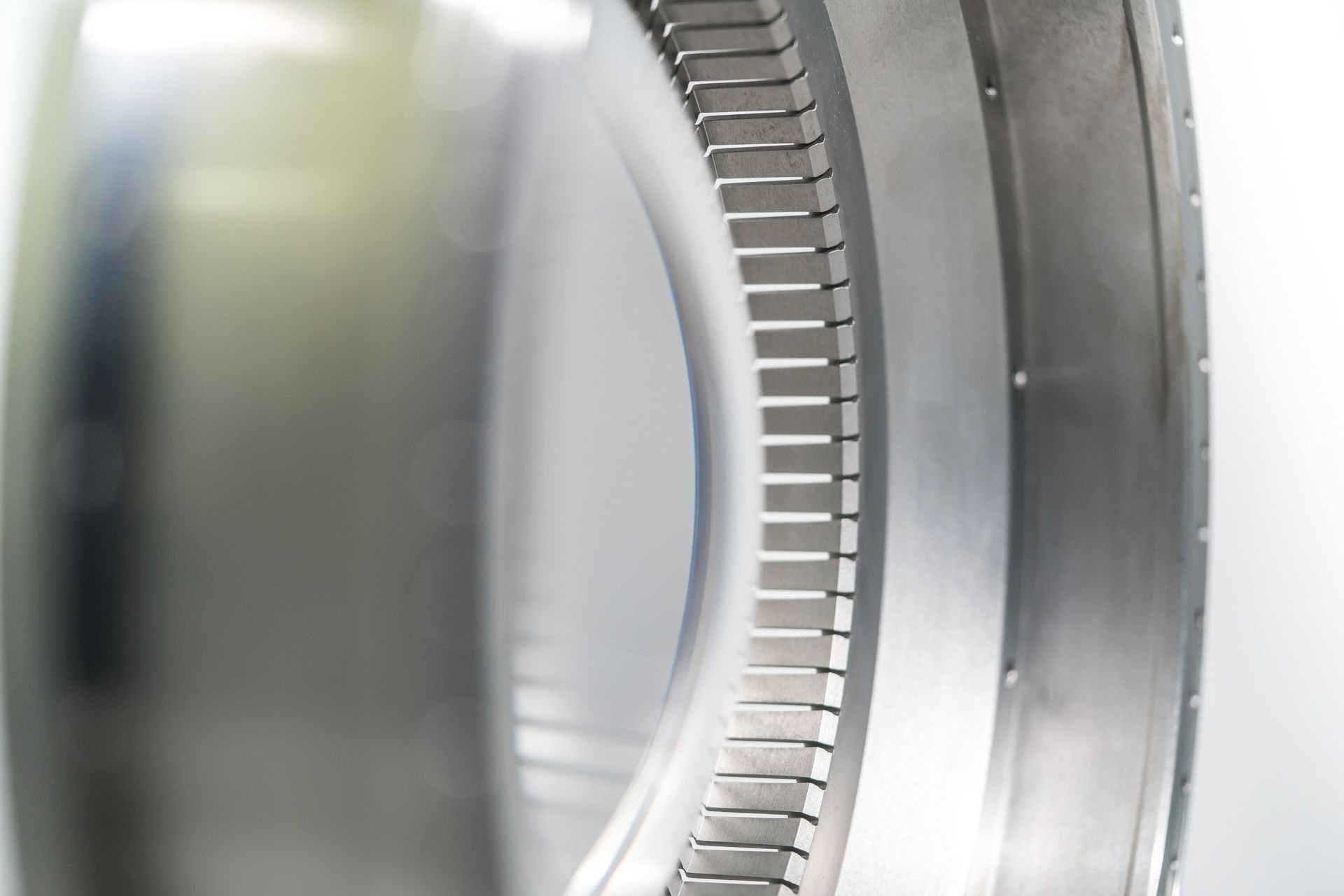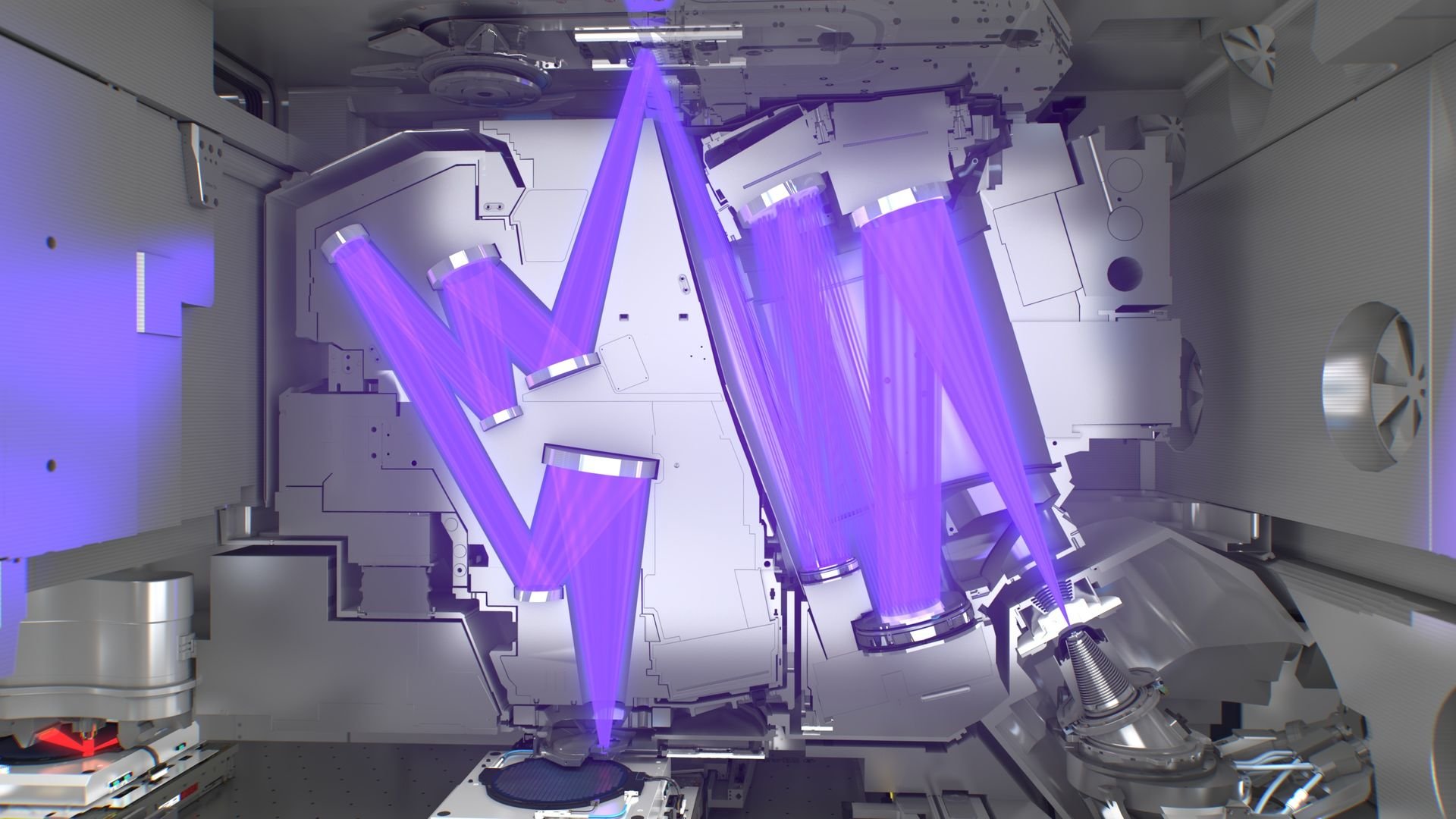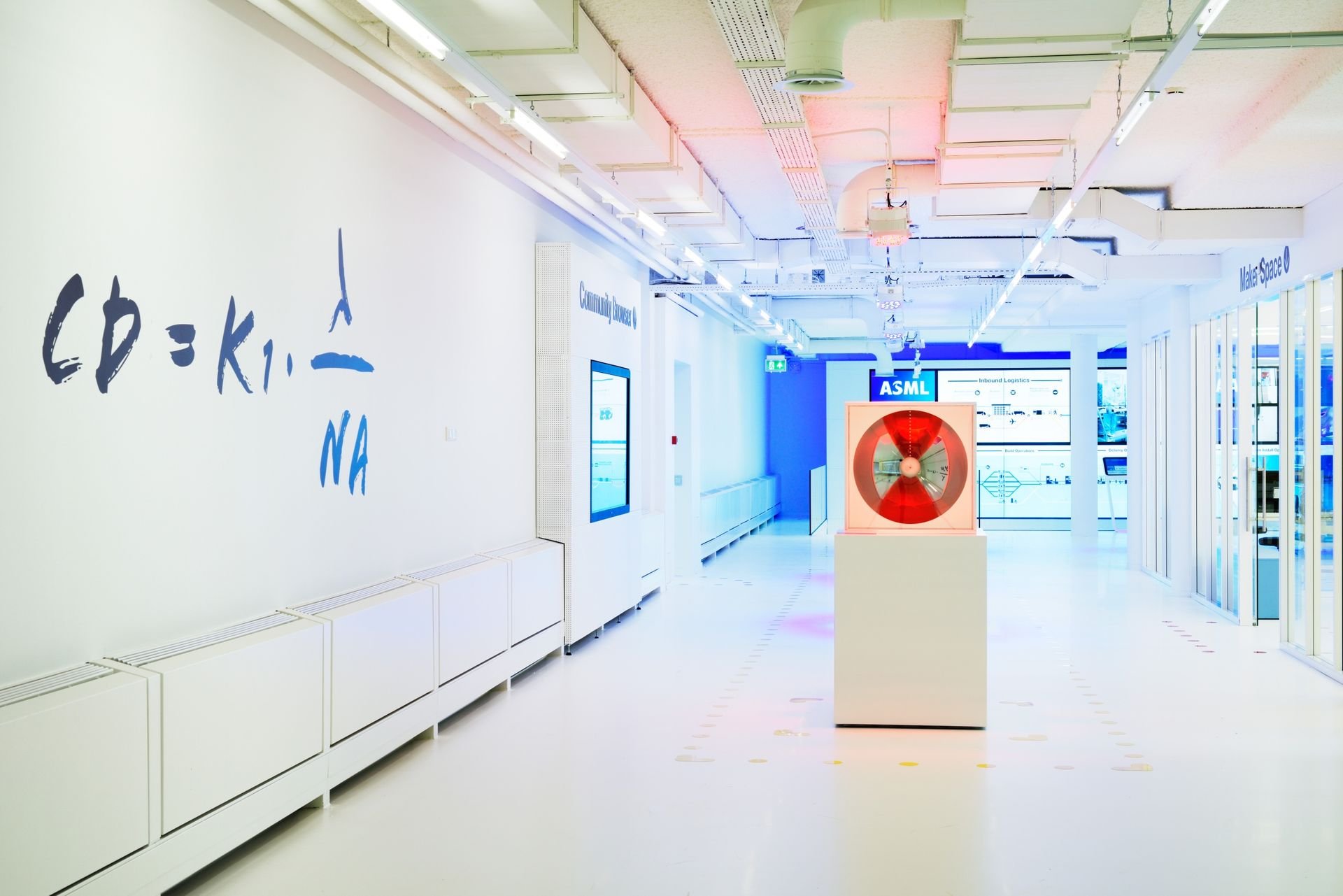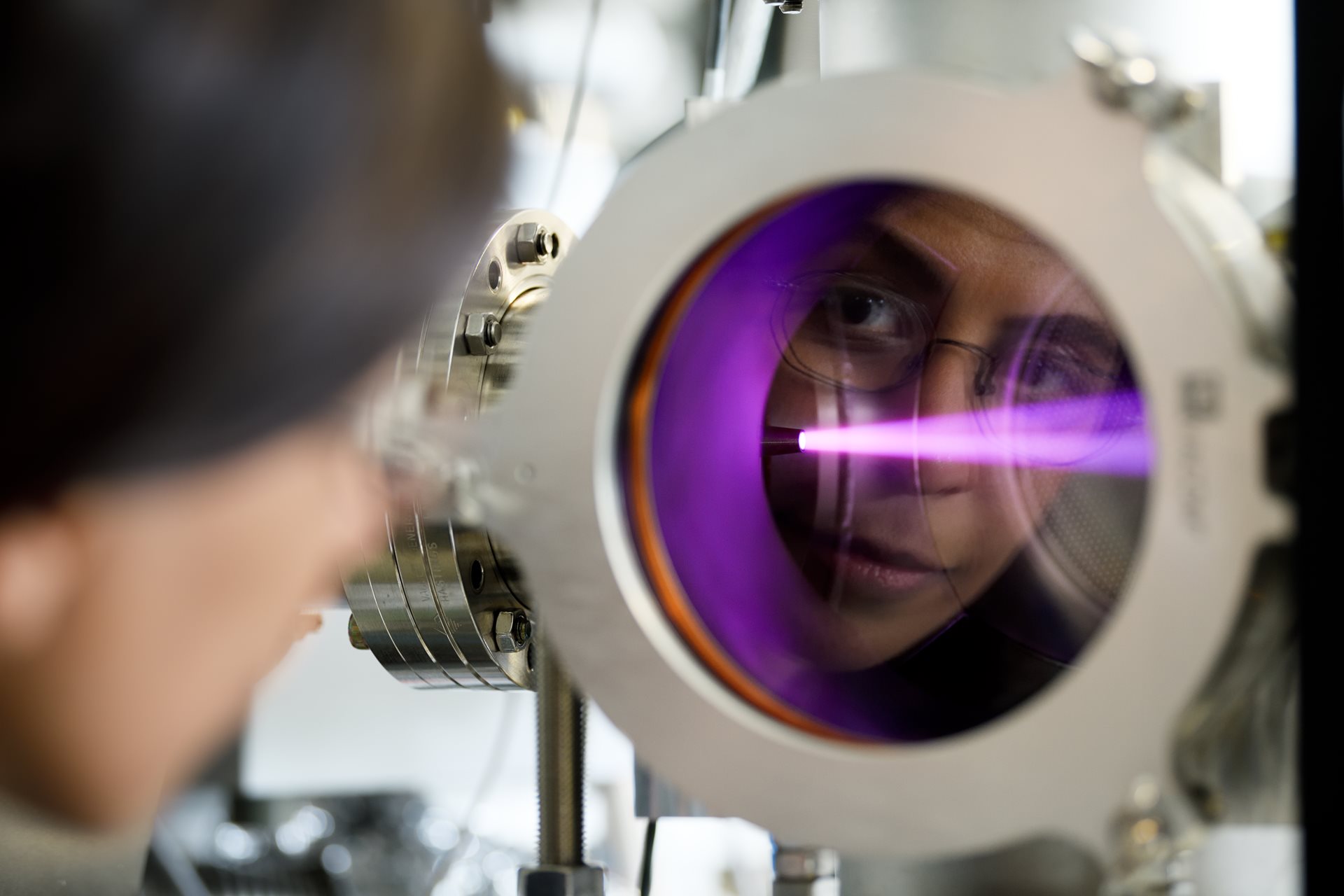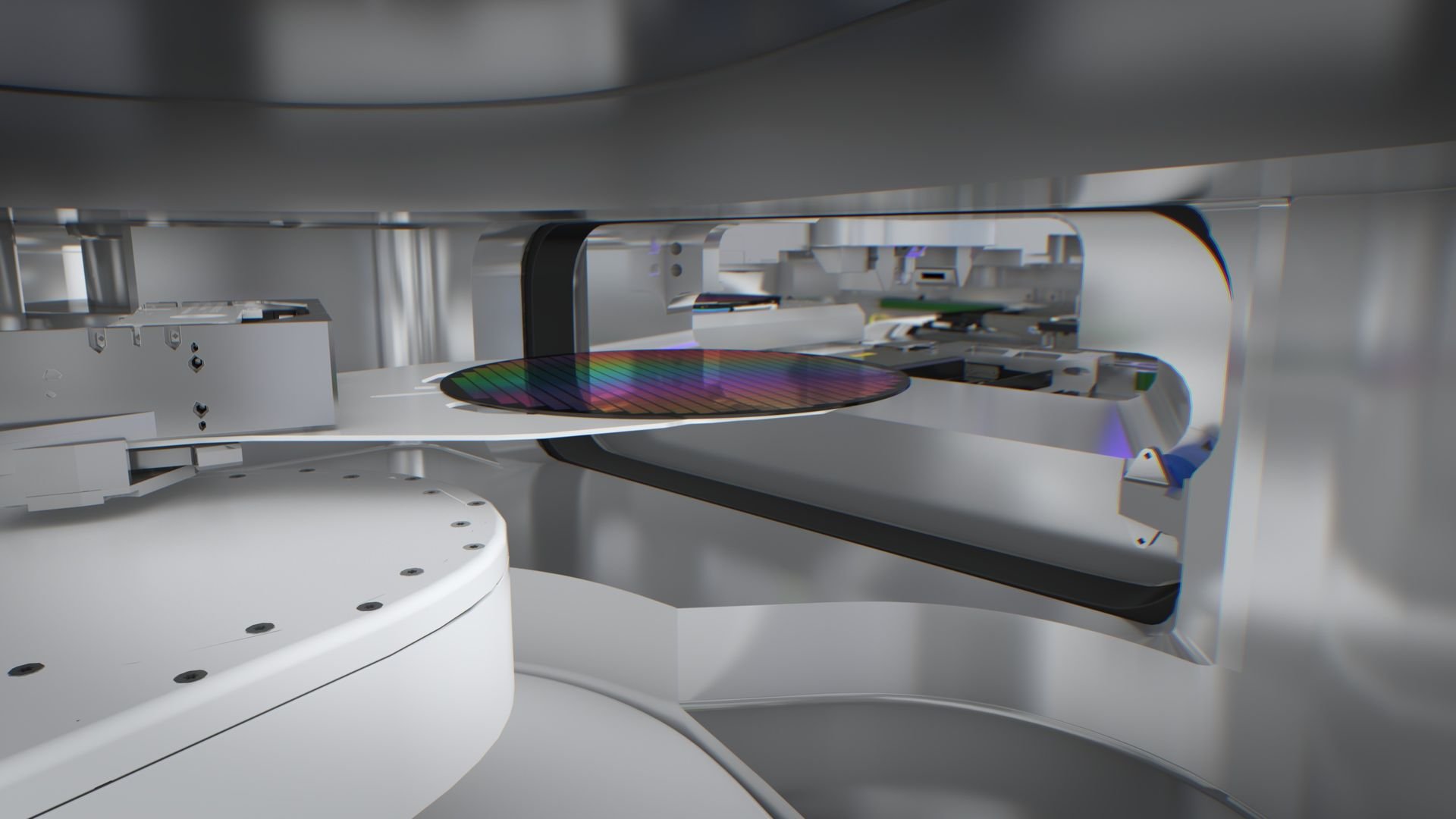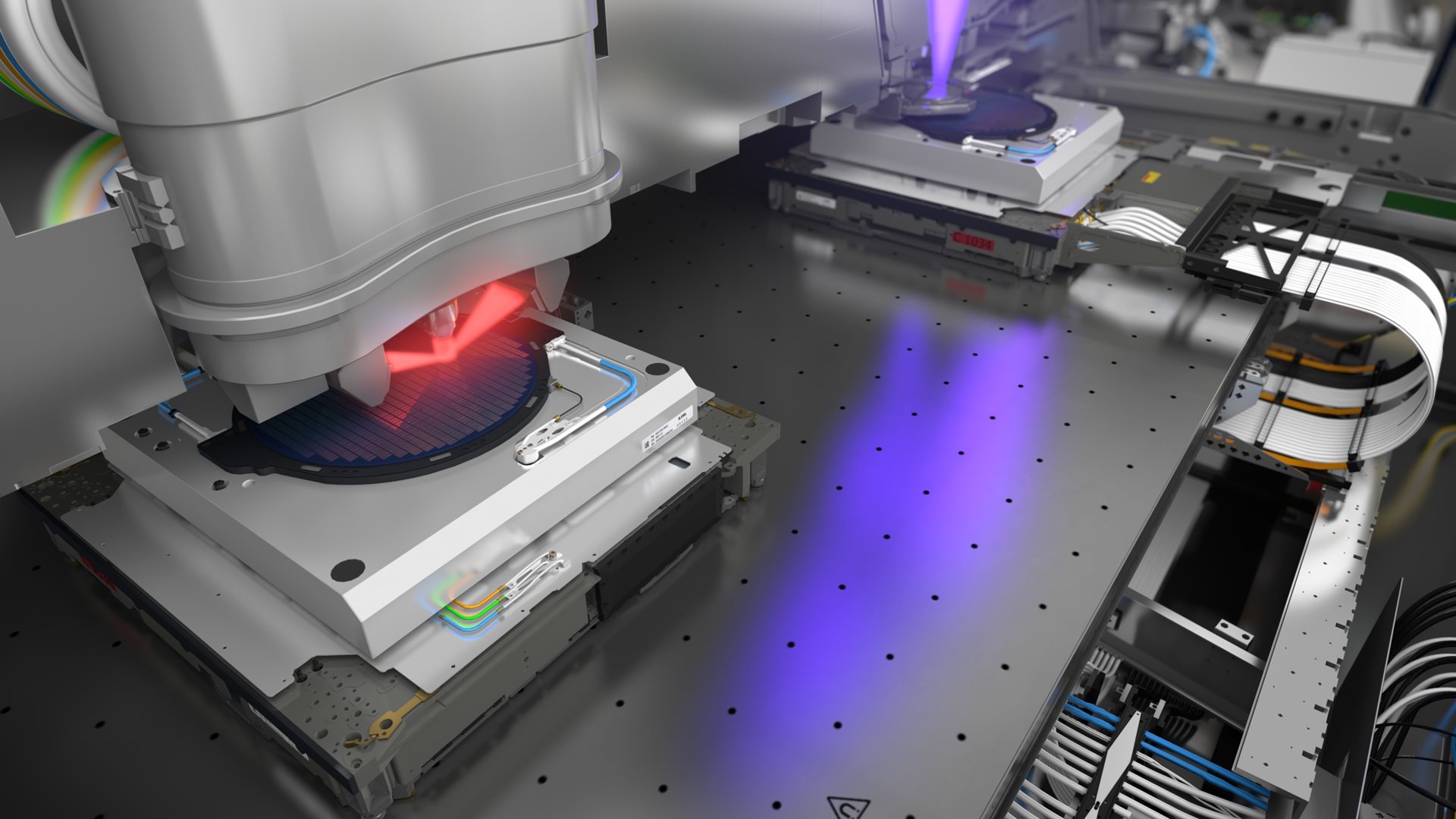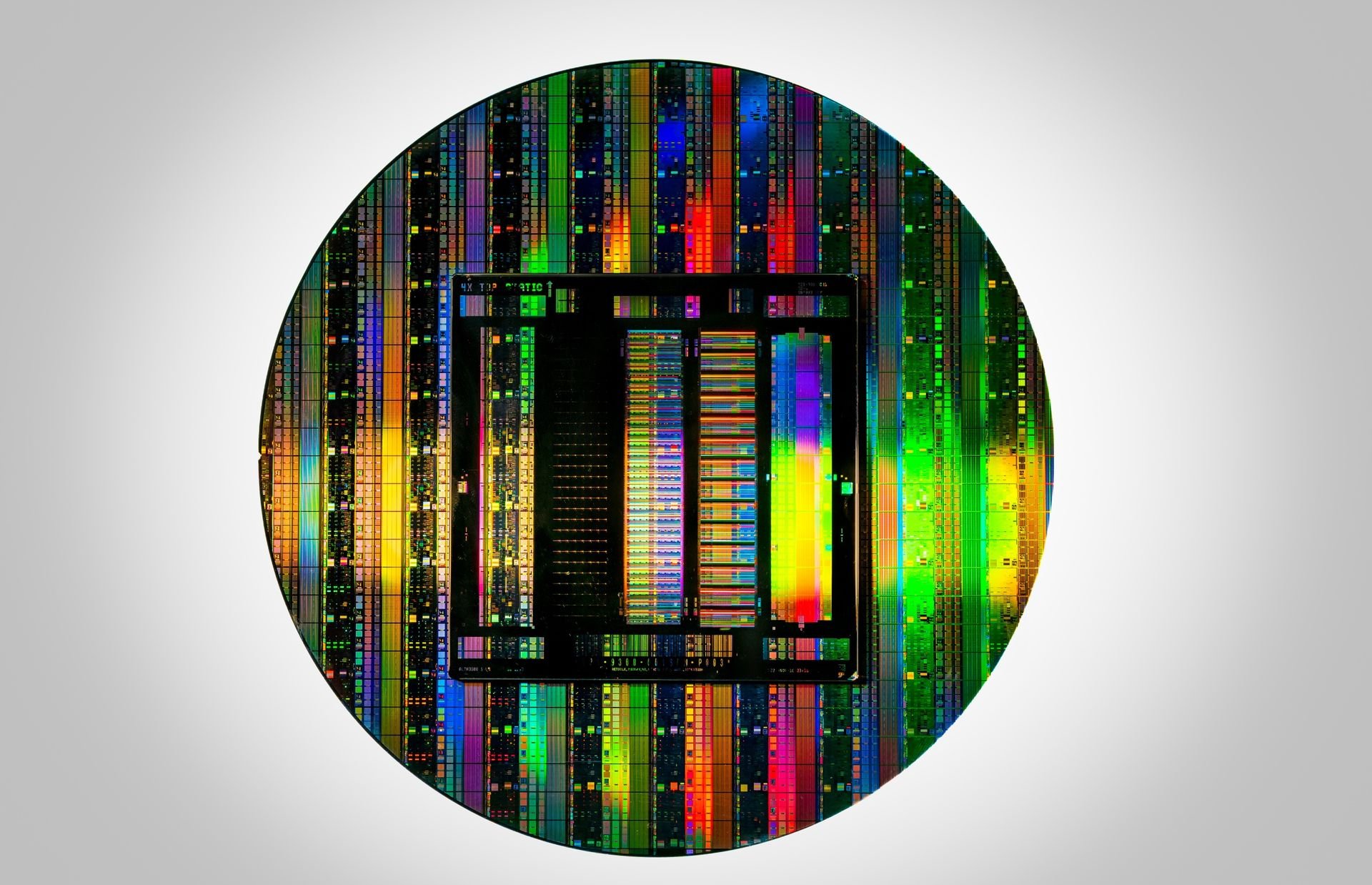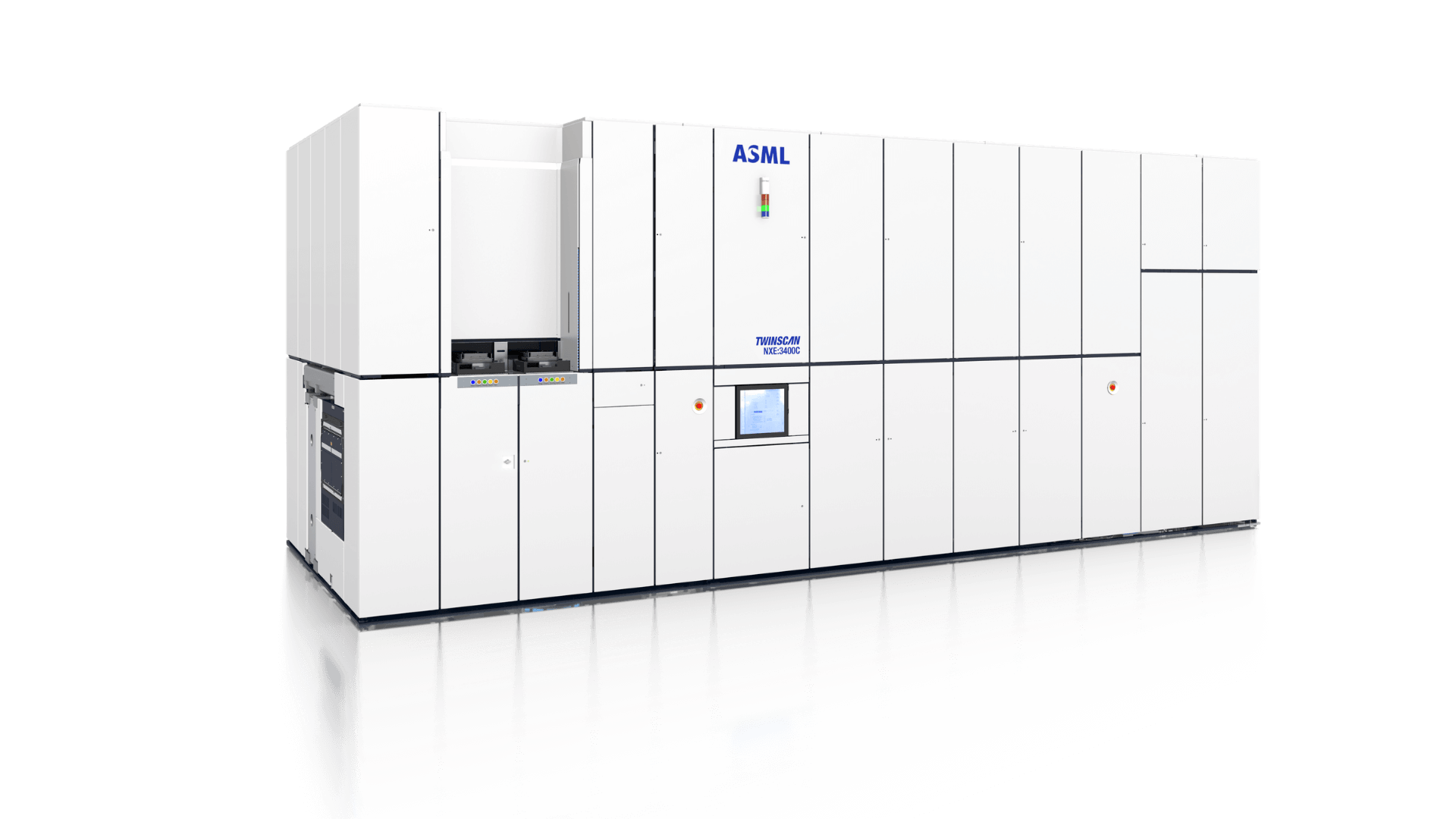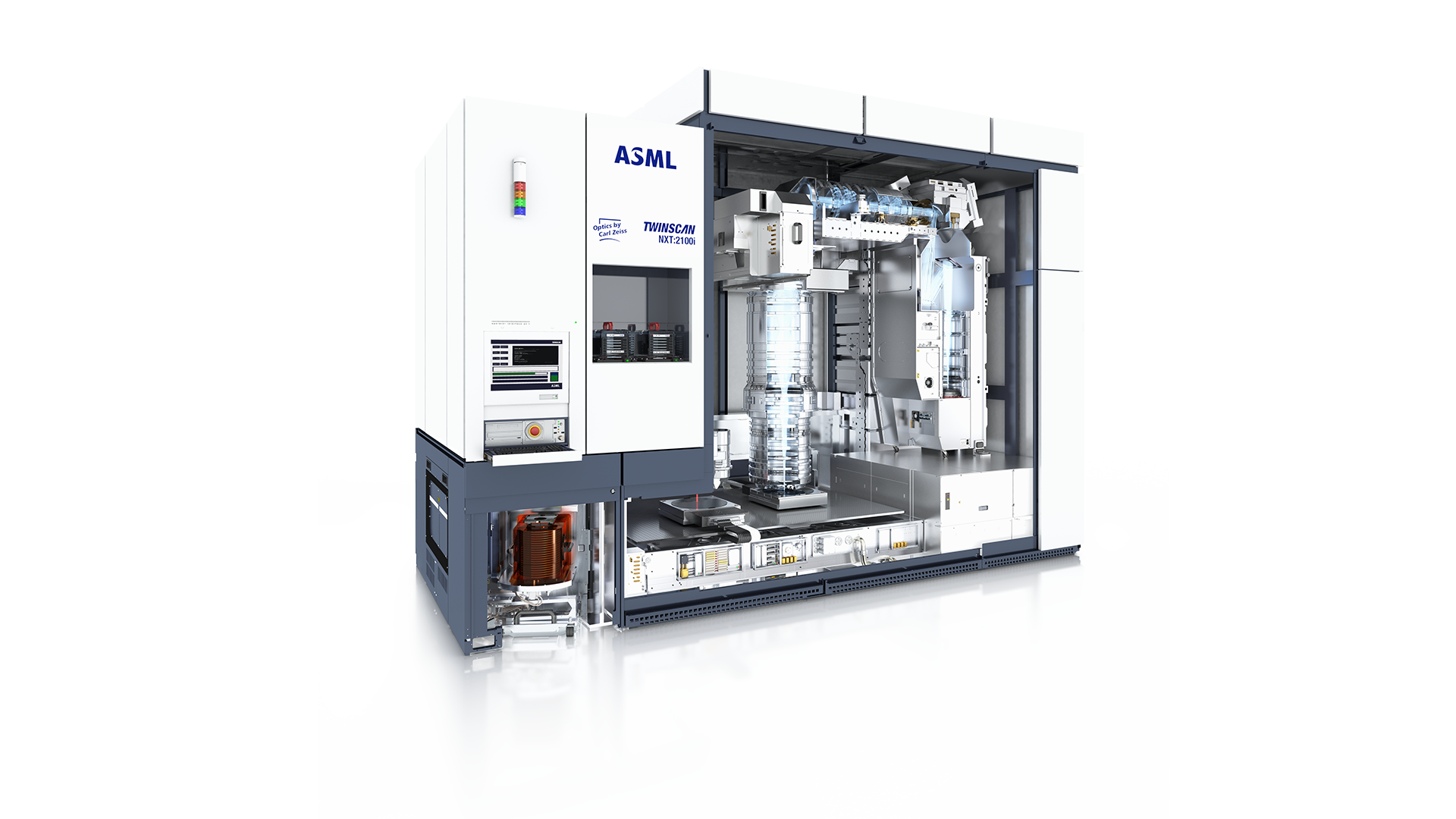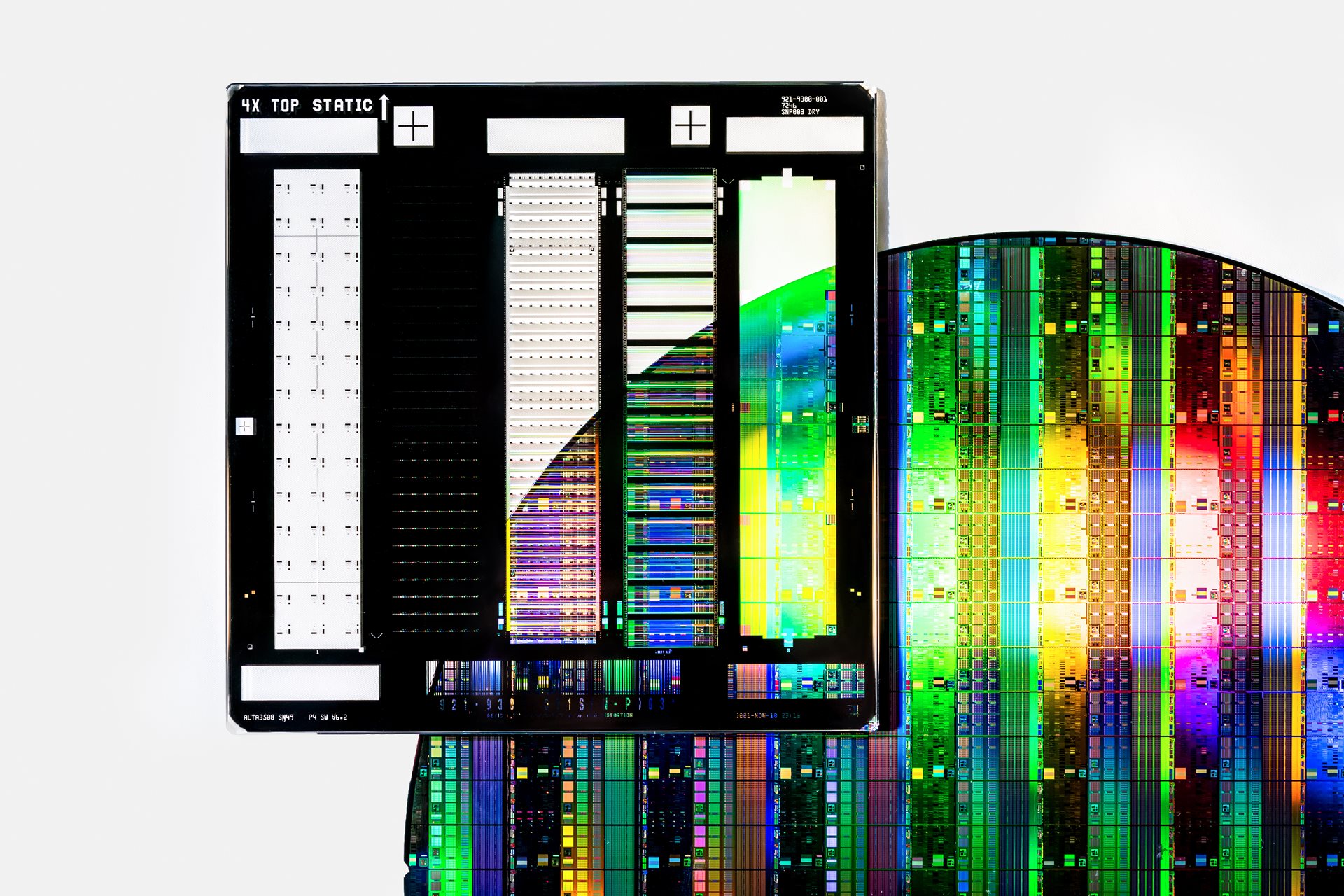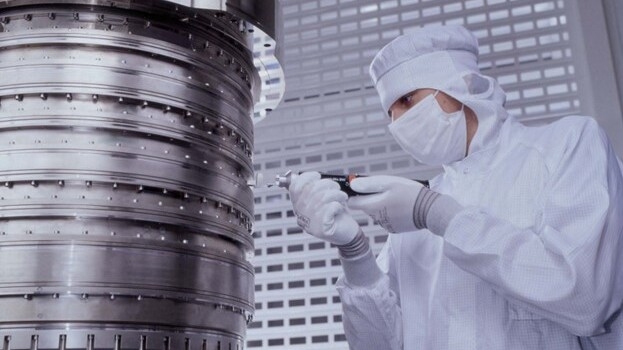When we talk about a lithography machine’s optics, we aren’t talking about a single, simple lens. The core of every lithography machine is an extended optical system made up of dozens of individual components.
In deep ultraviolet (DUV) lithography systems, those components are lenses; in extreme ultraviolet (EUV) systems, they’re mirrors. Each component must be correctly positioned to within a nanometer to ensure image quality. ASML’s innovations in lens and mirror design have allowed chipmakers to reduce the sizes of features on microchips. Since the late 1980s, all our lithography systems have featured optics from our strategic partner ZEISS.
Numerical aperture
The smallest feature size that a lithography system can print is given by the Rayleigh criterion. According to the formula, one factor that affects how small the feature size can be is the numerical aperture (NA), which is a measure of how much light the system’s optics can collect and focus.
Increasing a system’s NA by using larger, higher-precision optics will shrink the size of the features it can print. With optical systems more than 1.2 meters tall and weighing more than a metric ton, our highest-resolution DUV lithography machines reach an NA of 1.35.
Our state-of-the-art EUV lithography machines, whose largest mirrors are 1 meter across and smooth down to tens of picometers, have an NA of 0.55. Although that’s lower than the NA in DUV machines, the EUV systems print smaller features because they use a much smaller wavelength of light – another factor in the Rayleigh criterion.
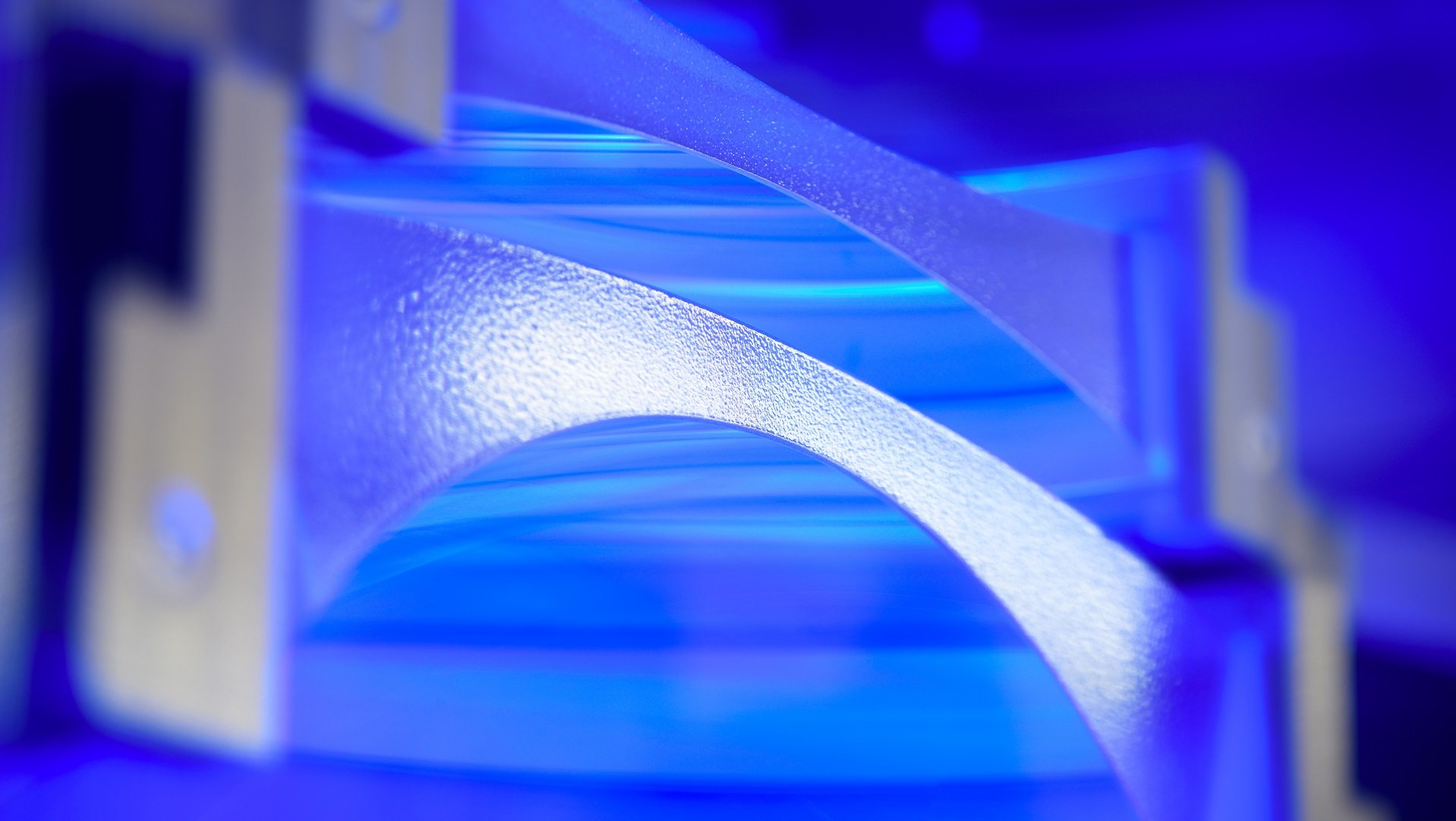
Immersion lithography
Loading component...
Complexity brings control
Loading component...
